
In the past when I traveled, I would only take photographs of places that others deemed important. For example, how could I visit Paris and not take a picture of the Eiffel Tower, right? But as time has passed I realize that while yes, I might want that photograph, I also can and should appreciate the beauty in everyday life. I’m a firm believer that art is all around us. It’s simply a matter of looking, appreciating and being open to the concept that almost anything can be considered art. For example, a street might just be a street to you at first, but upon closer inspection you might find fascinating doors, architecture, and everyday art in Budapest you would’ve otherwise missed. Look at the red in the cars and the awning in this picture above against the darker colored buildings. One photograph paints a story of someone’s life in a moment and makes me want to know more.
Walking along this street, I was initially captivated by the archways and balconies in the buildings, but then I saw the art on the side of the building at Akácfa utca 41. There stood this large piece of firewall art created by NeoPaint, a tribute to the tailors of the Jewish quarter while also displaying art to beautify this empty space. Instead of avoiding the obvious ugly space, street artists are finding a way to share their art and improve the look of the neighborhood.
TSG Tip: A firewall is a wall that connects two buildings. When buildings stand side by side, you can’t see the firewall. But when a building is gone, due to fire or other reasons, a large, empty space appears screaming for something to cover it up.

Opposite this firewall art is Ruhaklinika, a clothing alteration service, which reminds you that this is still an area where tailors work hard to make a living. The signage outside while dated is also art.
Another example of firewall art can be seen in Swallows on Akácfa Street from BreakOne. From the We Love Budapest website:
The theme and the given task of this 80-square-meter surface was the visual representation of the dichotomy “Nyugalom, vagy tombolás” (“Calmness, or rampage”). For artist Carlos BreakOne, calmness is best personified by a Hungarian nesting bird, the swallow. This work on Akácfa Street took 14 days to complete, since the constant rain made painting somewhat difficult. BreakOne believes that swallows are a symbol of peace, which is why he painted three of these birds on the wall.
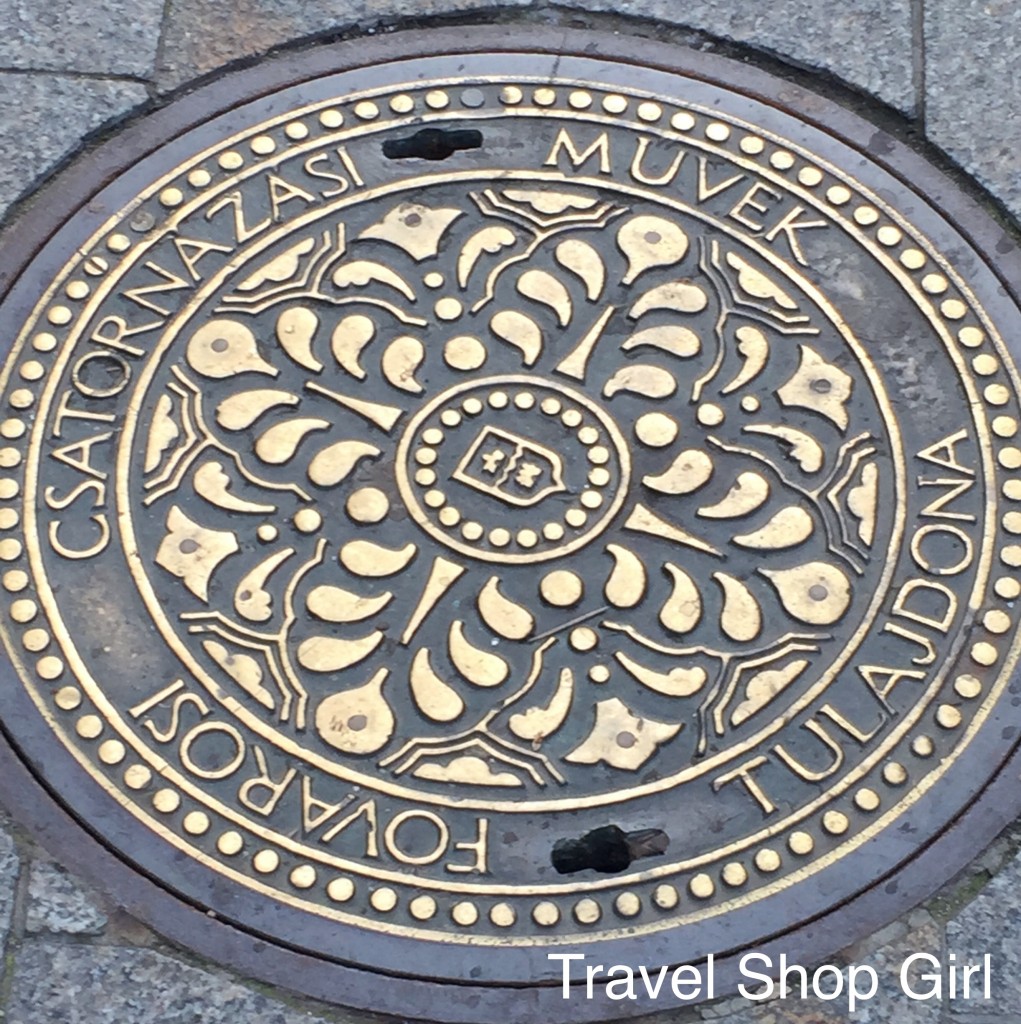
But don’t just look up as you walk through Budapest. Look down and check out the super cool manhole covers.
While some may not call this art, it’s interesting enough to take notice. I couldn’t hold back from snapping a pic of the doggie poop container sign or this “peachy” spray painted piece.

Without a doubt I can say that seeing the various doors and entrances into buildings in Budapest are majestic. This is one example, but most if not all are oversized and impressive. It makes you wonder what’s behind those grand doors, doesn’t it?
With a population of almost 1.75 million, Budapest is a large walkable city with hidden art jewels planted along every step of the way and its architecture is one of them. The architecture of this city is like many others with an evolution of architectural styles relating to certain time periods. As you travel through Budapest, you’ll also travel through time as you pass buildings of the Gothic and Neo-Gothic, Renaissance and Neo-Renaissance, Baroque and Neo-Baroque, Classicism and Neoclassicism, Romantic, and Art Nouveau periods. Whether you’re a true architectural buff or not, the arches, windows, balconies, doors, and other distinguishing features forces you to appreciate the countless hours of man hours needed to construct this city, whether the must see sights of Budapest like St. Stephen’s Basilica or Dohány Street Synagogue or everyday buildings.
While you have your eyes turned upward, look closely at the exterior of buildings for more interesting details. Is that original or was it added on later by its occupants? The stories are there for us to uncover if we decide to delve into them further.

Even a tiny car used for everyday use and perhaps not seen as anything special by the owner can be art. The same color as my first car, this little yellow car is the epitome of tiny car. You say “car” and I say “art” and in the end, we’re both right. Don’t you want to learn more about the person that owns this car and why they chose it? Who they are? Where they are?
Allow your imagination to run wild when you start to take photographs in a new city and you’ll discover not only the beauty of everyday art, but the stories of the people behind the art.
Do you prefer to take picture of the must see sights in a new city, everyday things, or like me, the everyday art in Budapest?




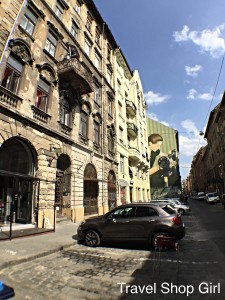
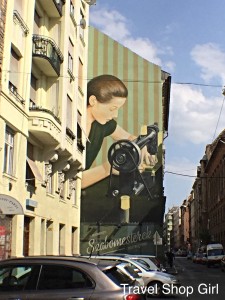
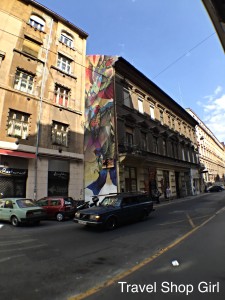
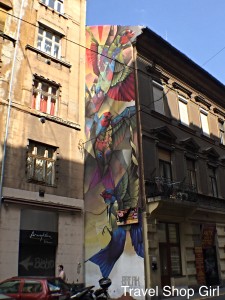
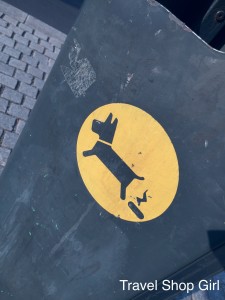
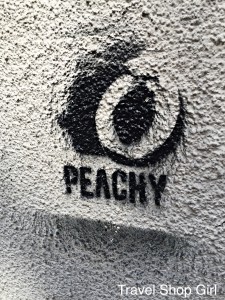
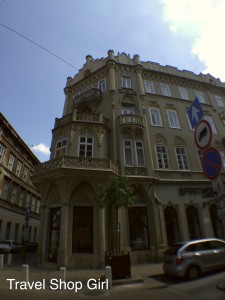
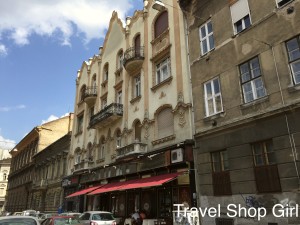
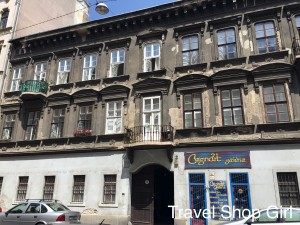
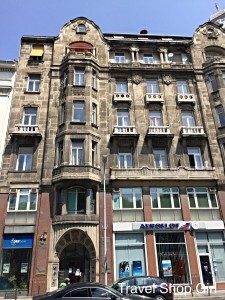
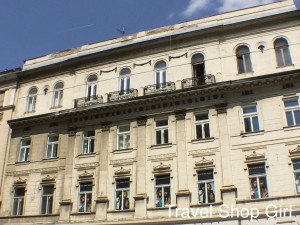
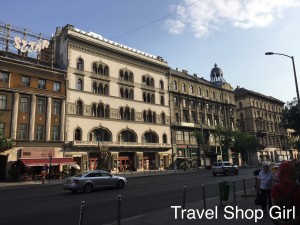
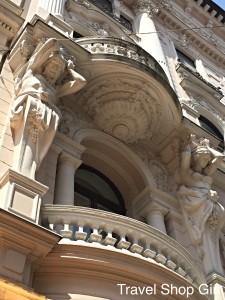
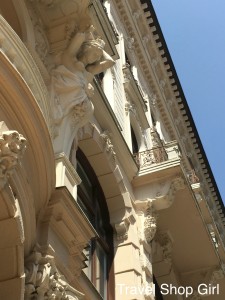
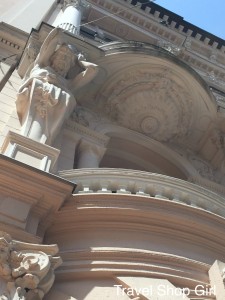
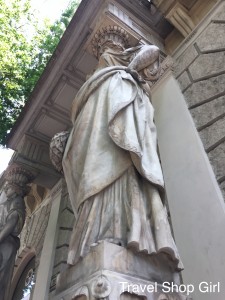
By the Royal Castle this Trabant – the most fav family car in the ’80’s – is parking . https://www.flickr.com/photos/100190534@N07/16200435473/in/photostream/
Awesome! I love those cars. Simple, but they do tell a story. I just knew it. 🙂